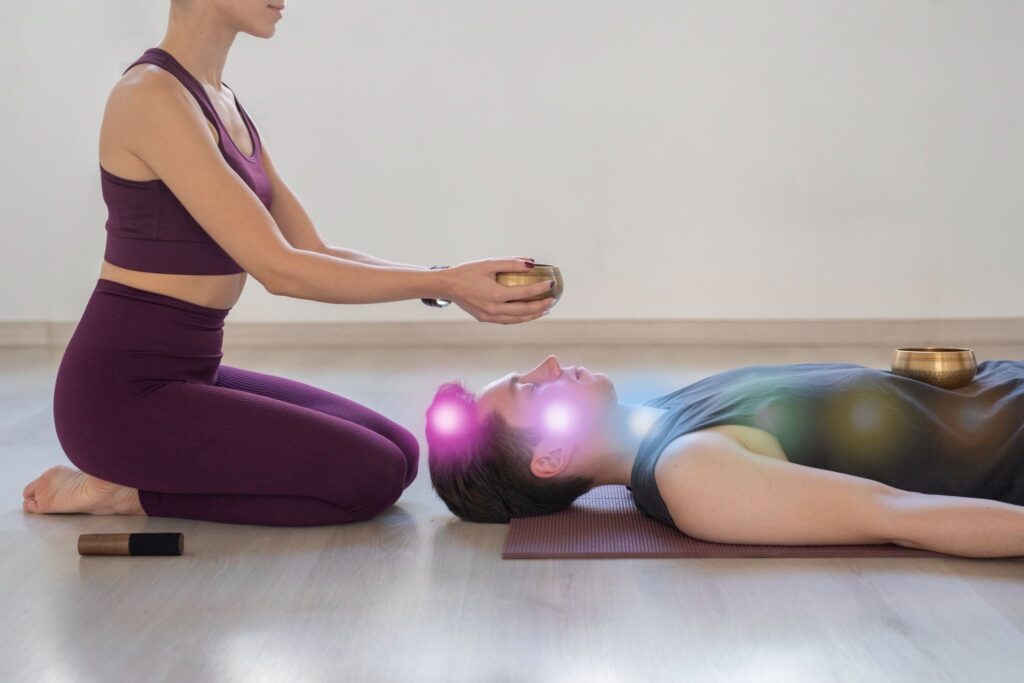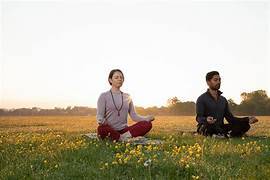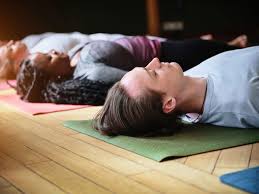Goa is not only a tropical haven that is filled with palm tree-studded beaches and hippie vibes — it has become one of India’s biggest yoga and holistic wellness destinations. If you have ever thought about having an intensive yoga practice or getting certified to teach yoga in nature’s beauty, then taking a yoga course in Goa is one of the best decisions you can make.
Now that you’ve made the choice, navigating the numerous yoga schools and guides can be daunting, as it’s challenging to find the right direction that suits your goals, level, and budget.
This comprehensive manual will walk you through the entirety you want to recollect earlier than enrolling yourself in a yoga course in Goa — whether or not you are a first-timer, an experienced yogi, or an aspiring teacher.
1. Natural Beauty and Tranquility
Goa offers a unique combination of lush greenery and beautiful beaches, coupled with peaceful surroundings – a perfect environment for spiritual growth and inner peace. A wonderful aspect of practicing yoga on the beach or in between the dancing coconut palms is that it adds significance to your experience. If nothing else, simply breathing in the fresh air of Goa and feeling the earth below you will begin to initiate your spiritual journey.
2. Rich Spiritual Heritage
Goa was not just an easy life of beach fun and partying; it was also spiritual. The majority of yoga schools draw on the foundations of ancient Indian philosophies and ways of living, including Ayurveda, pranayama, and meditation.
3. International Yoga Hub
Goa is a melting pot of yogis from all around the globe, whether or not an international community, or honestly, teachings by way of experienced Indian experts. There is a wide diversity of yoga and holistic environments that welcome every type and level of practitioners.
Step-by-Step Guide: Choosing the Right Yoga Course in Goa
Step 1: Define Your Goals
Before searching for the precise yoga path, reflect on what you want to attain:
- Are you an amateur hoping to construct a great basis?
- Are you hoping to end up a licensed yoga instructor (200/300/500-Hour TTC)?
- Are you seeking out detox programs or religious immersion-type experiences?
- Do you want to dive deeper into a specific style (e.g., ashtanga, hatha, vinyasa)?
Being clear on your goals will help narrow down the great alternatives available.
Step 2: Choose the Right Type of Course
The following are the most popular yoga courses offered in Goa:
1. Yoga Retreats
- Duration: 3–10 days
- Focus: De-stressing, relaxation, detoxing, and rejuvenation
- Includes: Daily yoga practice, meditation, organic meals, and wellness therapies
- Best suited for: Beginners, visitors, and those who want a quick break
2. 200-Hour Yoga Teacher Training (YTT)
- Duration: 21–30 days
- Focus: Yoga philosophy basics, anatomy, teaching methods, and personal practice
- Includes: Intensive daily classes, practicums in teaching, Yoga training certification
- Best for: Serious students or future yoga instructors
3. 300-Hour/500-Hour Advanced YTT
- Duration: 30–60 days
- Focus: Advanced asanas, in-depth anatomy, yoga therapy, and professional instruction
- Includes: Advanced modules, workshops, and mentoring
- Best for: Certified teachers to enhance their skills
4. Specialty Yoga Courses
- Examples: Prenatal yoga, Yin yoga, Ayurveda & yoga, Acro yoga
- Best for: Those interested in studying specific branches of yoga or acquiring niche skills
Step 3: Research the Yoga School
Since there are hundreds of schools in Goa, the quality is highly uneven. Here’s how you can assess a yoga school:
1. Certification and Affiliation
- Search for schools that are registered with a credible yoga training institute like Oceanic Yoga.
- Accreditation will guarantee that you get a globally accepted certification and standardized curriculum.
2. Credentials of Teachers
- Examine the bios of the lead teachers: Do they have at least 5–10 years of experience?
- Do they teach the style you want to learn?
- Are they friendly and student-centered?
3. Reviews and Testimonials
- Read Google reviews, YouTube vlogs, and forums such as Reddit or Yoga Alliance listings.
- Listen to comments on the quality of teaching, accommodation, food, and support for students.
4. Class Size
- Small classes (fewer than 20 students) offer more one-on-one attention.
- Large classes might be cheaper, but not so personal.
Step 4: Consider the Yoga Style
| Style | Best For | Description |
| Hatha | Beginners, traditionalists | Gentle, foundational practice focusing on basic postures, breath, and alignment. Ideal for newcomers. |
| Vinyasa | Intermediate, dynamic movers | Flow-based style where movements are linked with breath. Creative, energetic, and modern. |
| Ashtanga | Advanced, disciplined practitioners | A rigorous, structured series of postures. Builds strength, flexibility, and discipline. |
| Yin | All levels, healing seekers | Slow-paced, passive stretches held for longer periods. Focuses on deep tissues and meditative stillness. |
| Iyengar | Alignment-focused practitioners | Emphasizes precision and alignment using props like blocks and straps. Therapeutic and detail-oriented. |
Choose a style that matches your energy levels, goals, and physical condition.
Step 5: Location Within Goa
Goa is carved up into two main areas: North Goa and South Goa, each with a different atmosphere.
North Goa
- Places: Anjuna, Arambol, Mandrem
- Atmosphere: Lively, social, bohemian
- Best for: People who need to combine yoga with nightlife, cafes, and neighborhood network
South Goa
- Places: Palolem, Agonda, Patnem
- Atmosphere: Quiet, serene, spiritual
- Best for: Intensive immersions, teacher education, and detox retreats
- Select based on whether you need community and action or isolation and contemplation.
Step 6: Check Course Structure and Daily Schedule
Most YTTs or retreats follow a disciplined schedule. Here’s a sample daily structure:
| Time | Activity |
| 6:00 AM | Morning meditation |
| 7:00 AM | Asana practice |
| 9:00 AM | Breakfast |
| 10:00 AM | Philosophy or anatomy |
| 1:00 PM | Lunch and rest |
| 3:00 PM | Workshop or teaching |
| 5:00 PM | Evening yoga or chanting |
| 7:00 PM | Dinner and reflection |
Before enrolling, ensure the schedule feels manageable and aligns with your lifestyle.
Step 7: Accommodation and Food
Most yoga faculties provide on-campus accommodation and Sattvic (vegetarian) food. Ask yourself:
- Is the lodging smooth, cushty, and near nature?
- Are the delicacies healthy, natural, and appropriate to your dietary requirements?
- Do they aid allergies or vegan/gluten-free food?
An enjoyable ecosystem permits you to concentrate on the internal work without distractions.
Step 8: Budget and Hidden Costs
Yoga courses in Goa can cost anything from INR 15,000 to INR 2,00,000 based on duration, high-quality, and inclusions.
Look for:
- What does the charge cost? (Books, certification, food, accommodation)
- Are there additional expenses for tours, massage, or airport switch?
- Does it have a cancellation or refund coverage?
Keep in mind that a price decrease is not always higher. Invest in value, no longer cost.
Step 9: Seasonal Timing
The ideal time to take yoga lessons in Goa is October to March, while the weather is exceptional and the tourist season is on. Steer clear of the monsoon season (June to September), while most schools shut down and seashores end up much less on hand.
Step 10: Trust Your Intuition
At last, believe your instincts. If a faculty’s environment, an instructor’s strength, or a curriculum resonates with you, agree with it. Read via course material, view videos, be a part of online orientations if supplied, and talk to alumni. Your internal compass is commonly the best navigator.
Top 5 Recommended Yoga Schools in Goa (2025 Edition)
Oceanic Yoga
Renowned for: 200 Hour YTT, 300 YTT, Yin Yoga, Yoga Nidra & Meditation, Sound Healing, Hybrid YTT
Kranti Yoga School (Patnem)
Renowned for: Vinyasa & Yin YTTs, ocean-campus
Yoga Alliance Certified
Sampoorna Yoga (Agonda)
Renowned for: 200/300 Hour YTTs, holistic setting
Outstanding international staff
Earth Yoga Village (Palolem)
Renowned for: Eco-village living, meditation retreats
Ayurvedic integration available
Trimurti Yoga (Assagao)
Renowned for: Multi-style YTTs and teacher diversity
Flexible modules
Ashiyana Yoga Retreat (Mandrem)
Renowned for: Luxury environment, transformational retreats
Ideal for burnout recovery
Conclusion
Selecting the correct yoga path in Goa is a completely personal choice—and one that may have a lasting impact on your life. If you’re searching for recovery, transformation, or a new career, Goa’s yoga selections are as numerous and vibrant as its sunsets.
Invest in time, studies, contemplation, and inquiry into colleges. The appropriate direction will now not most effective teach you in yoga—it’ll introduce you to a wholly new lifestyle. So take a deep breath, trust in the route, and prepare to unroll your mat in paradise.






